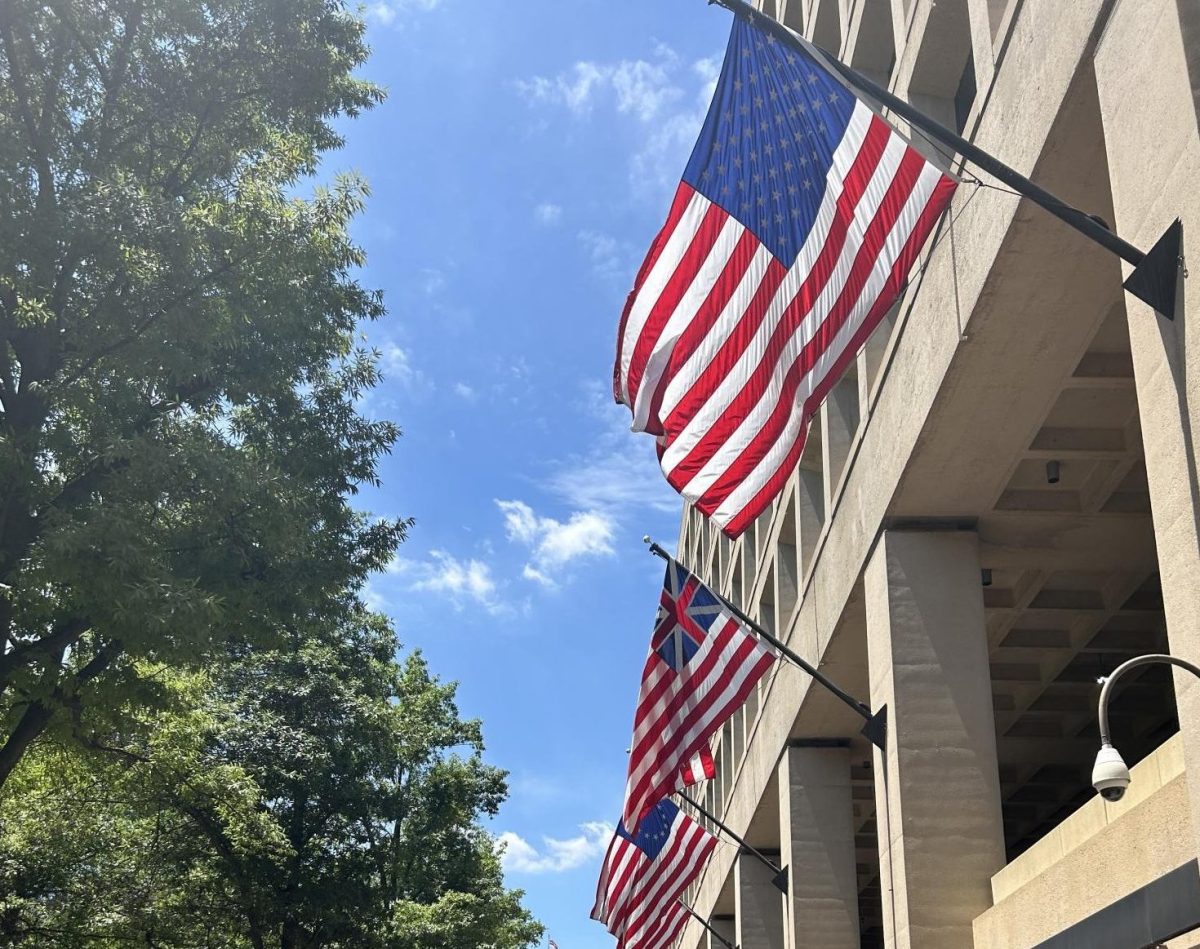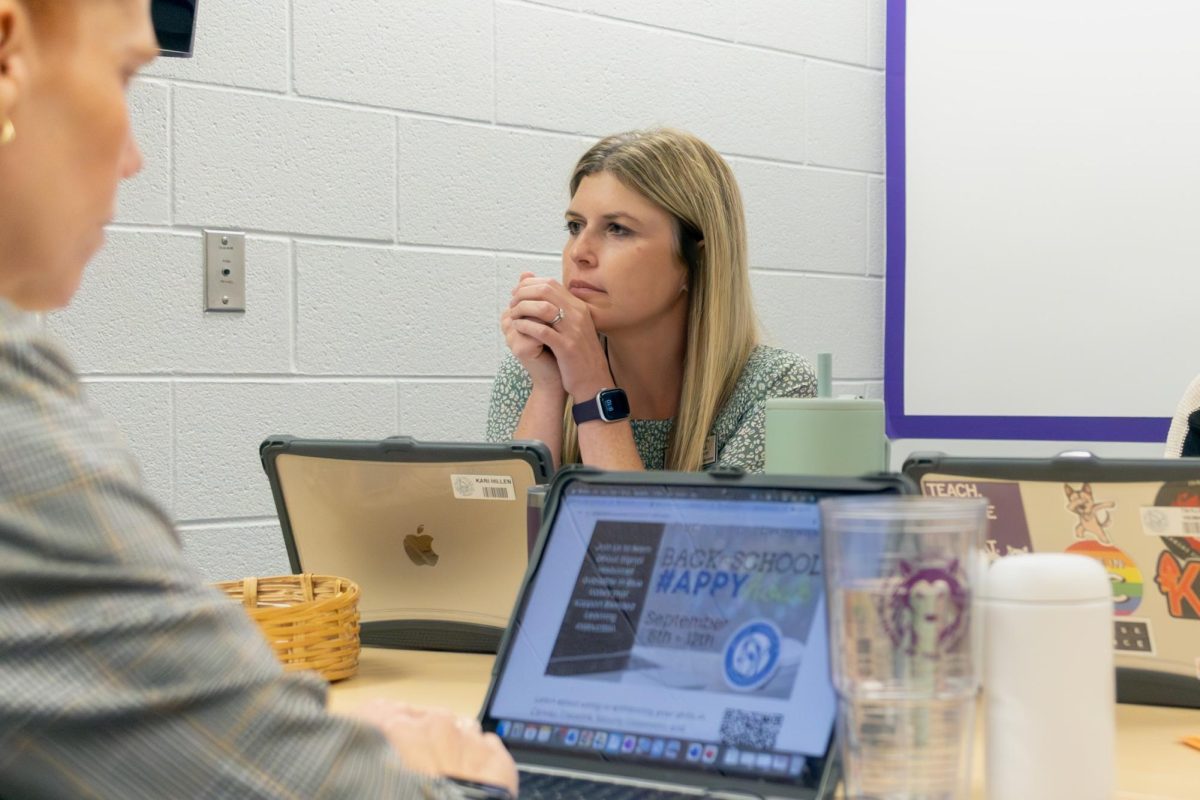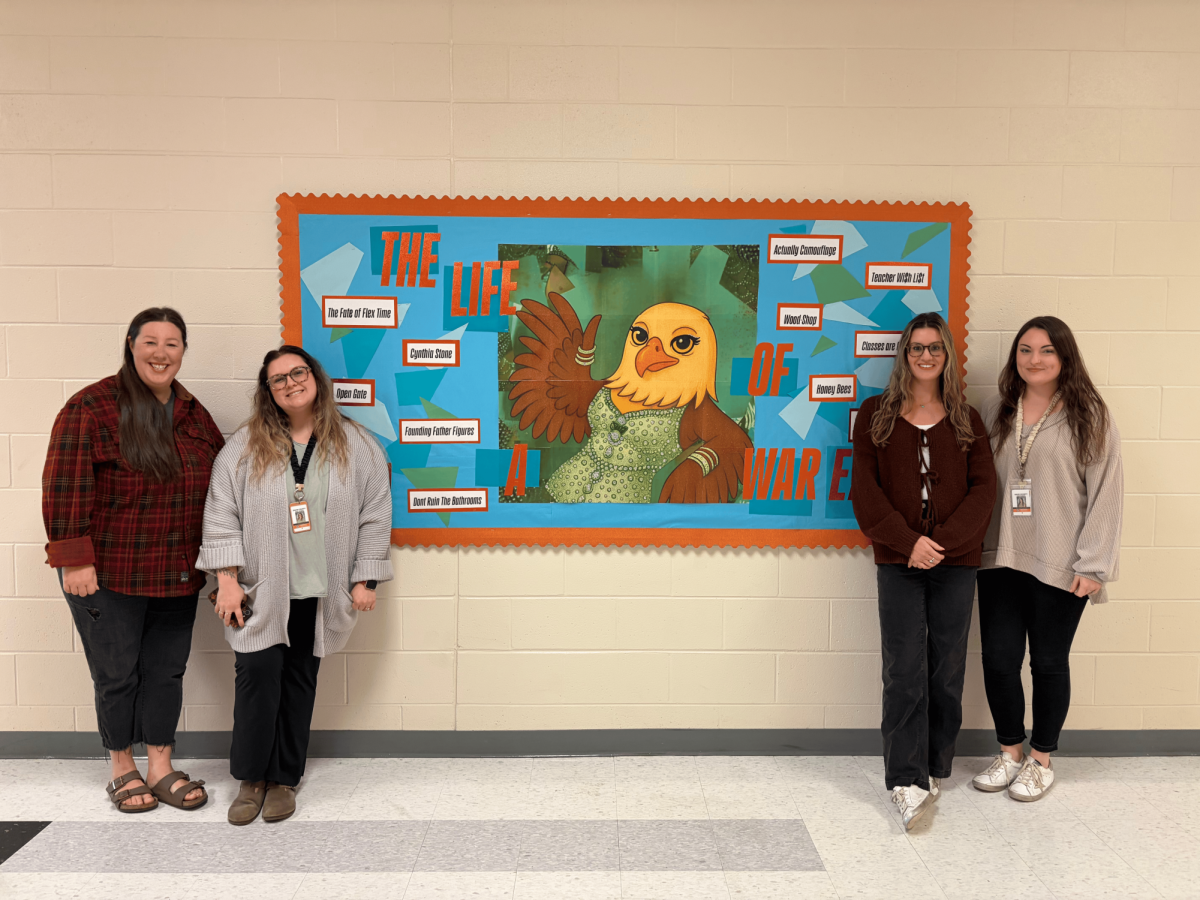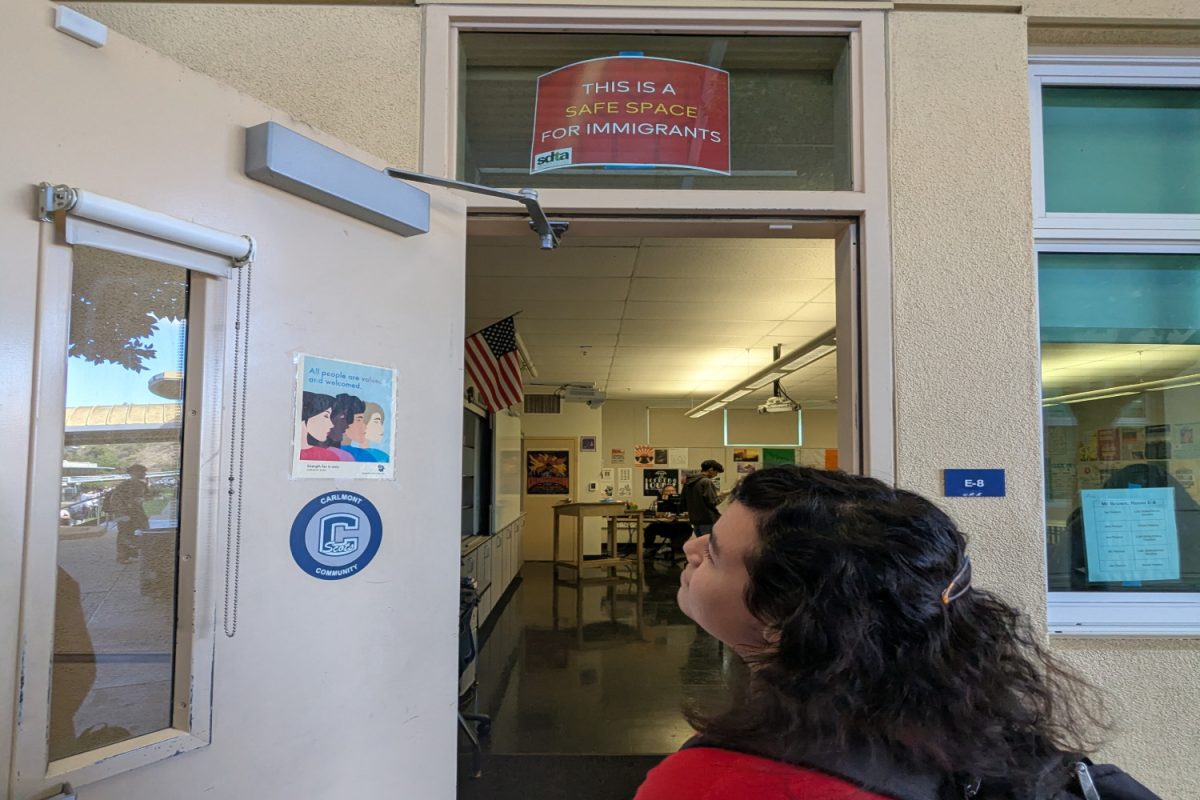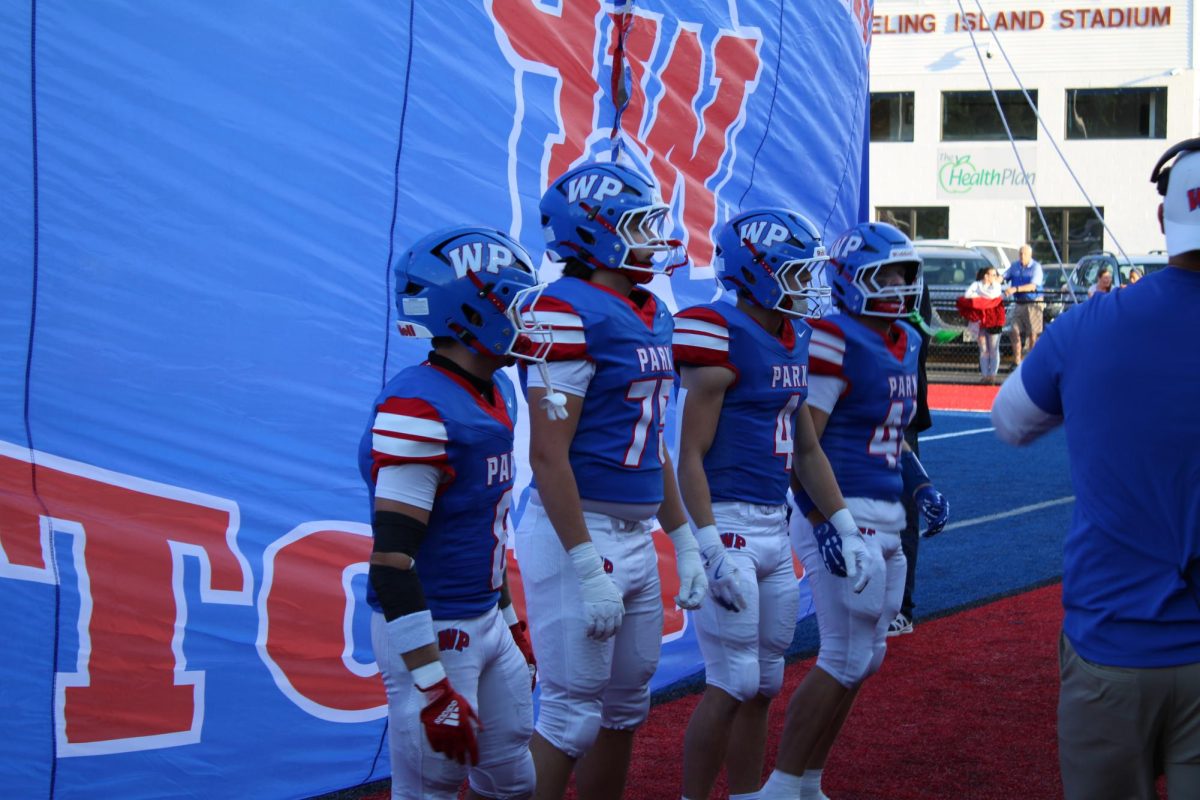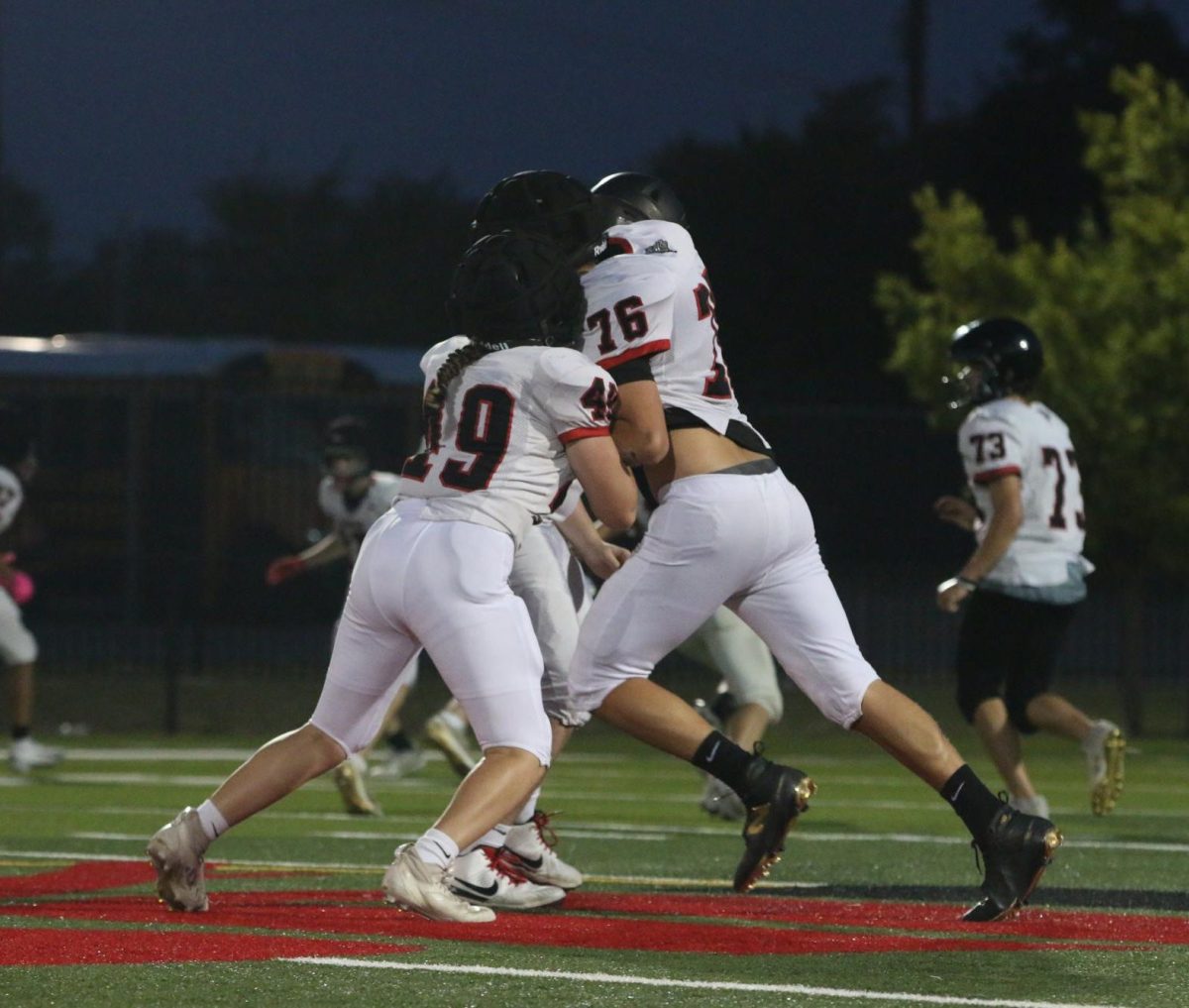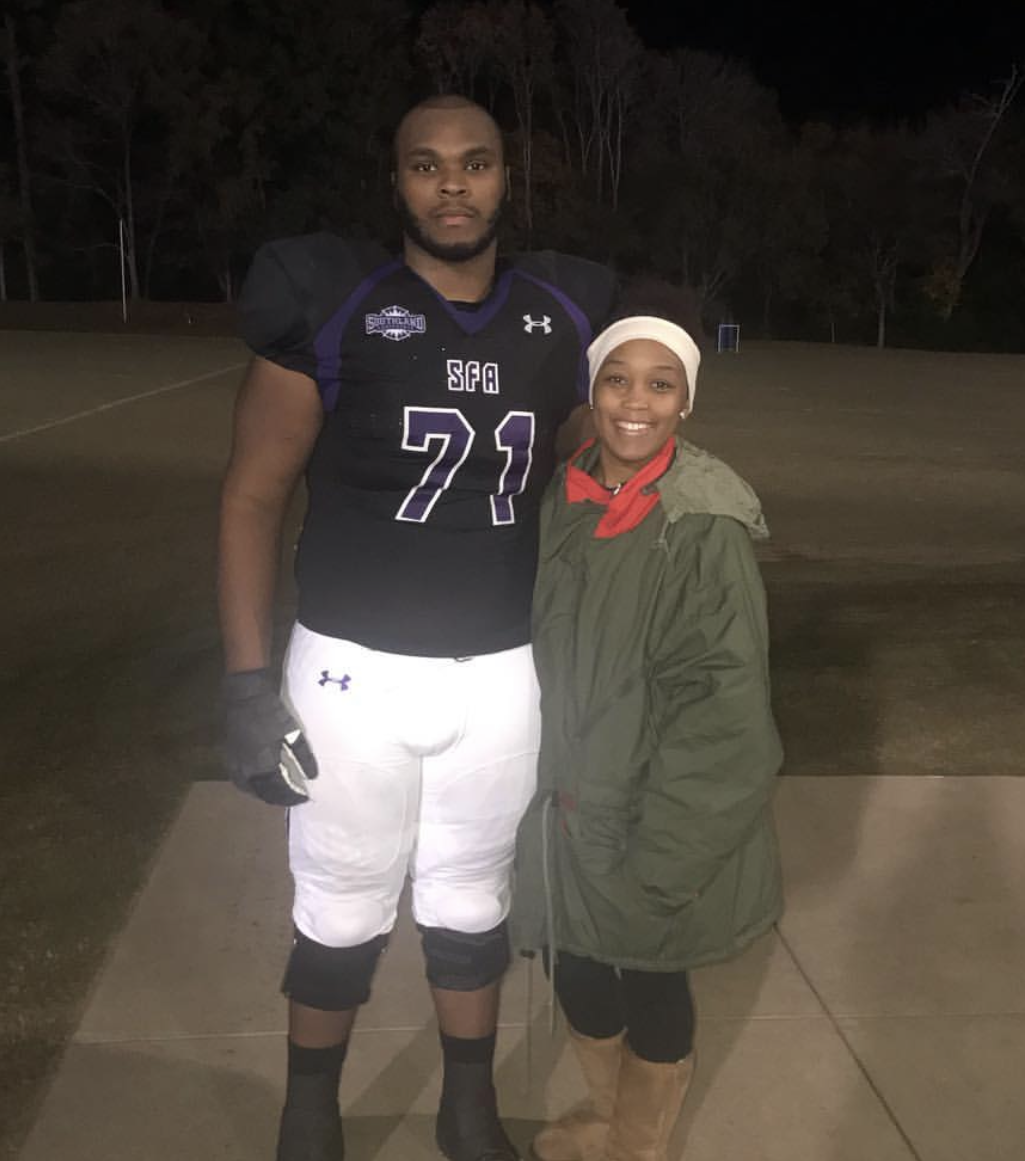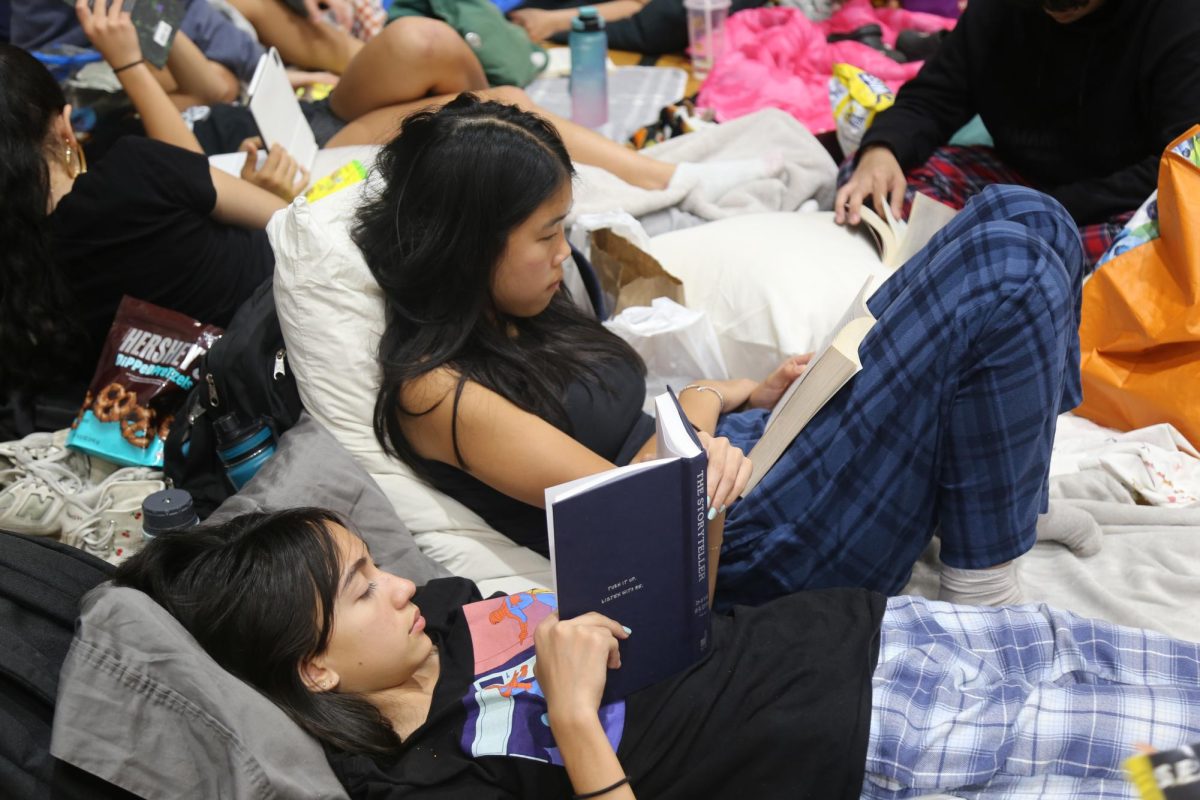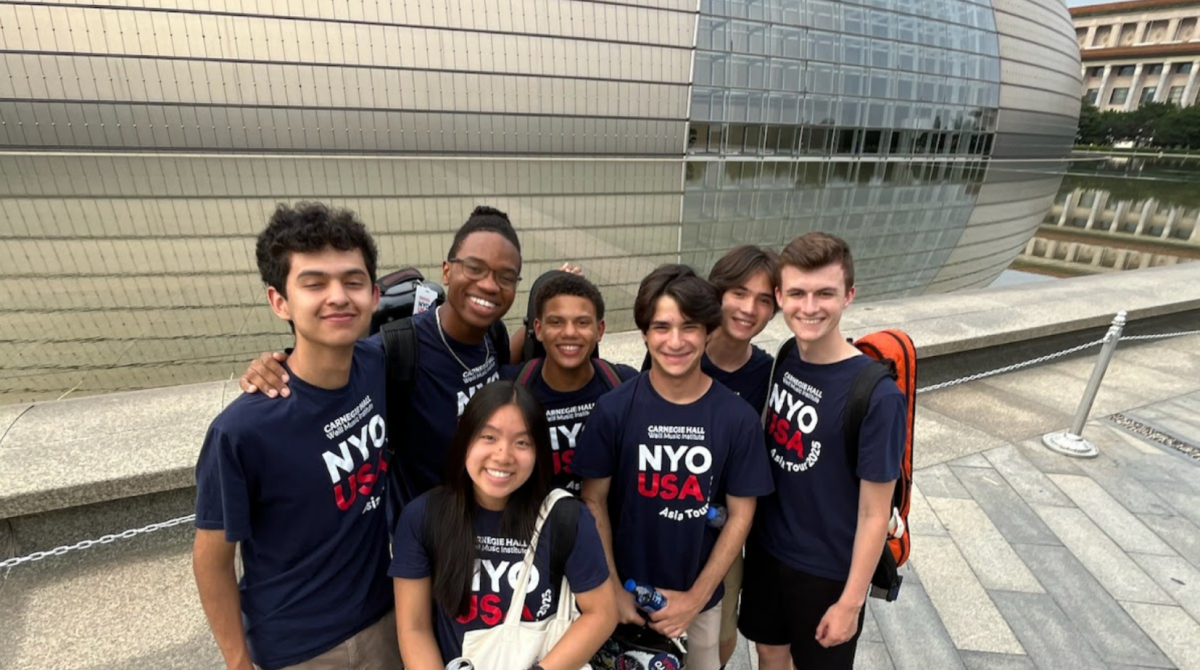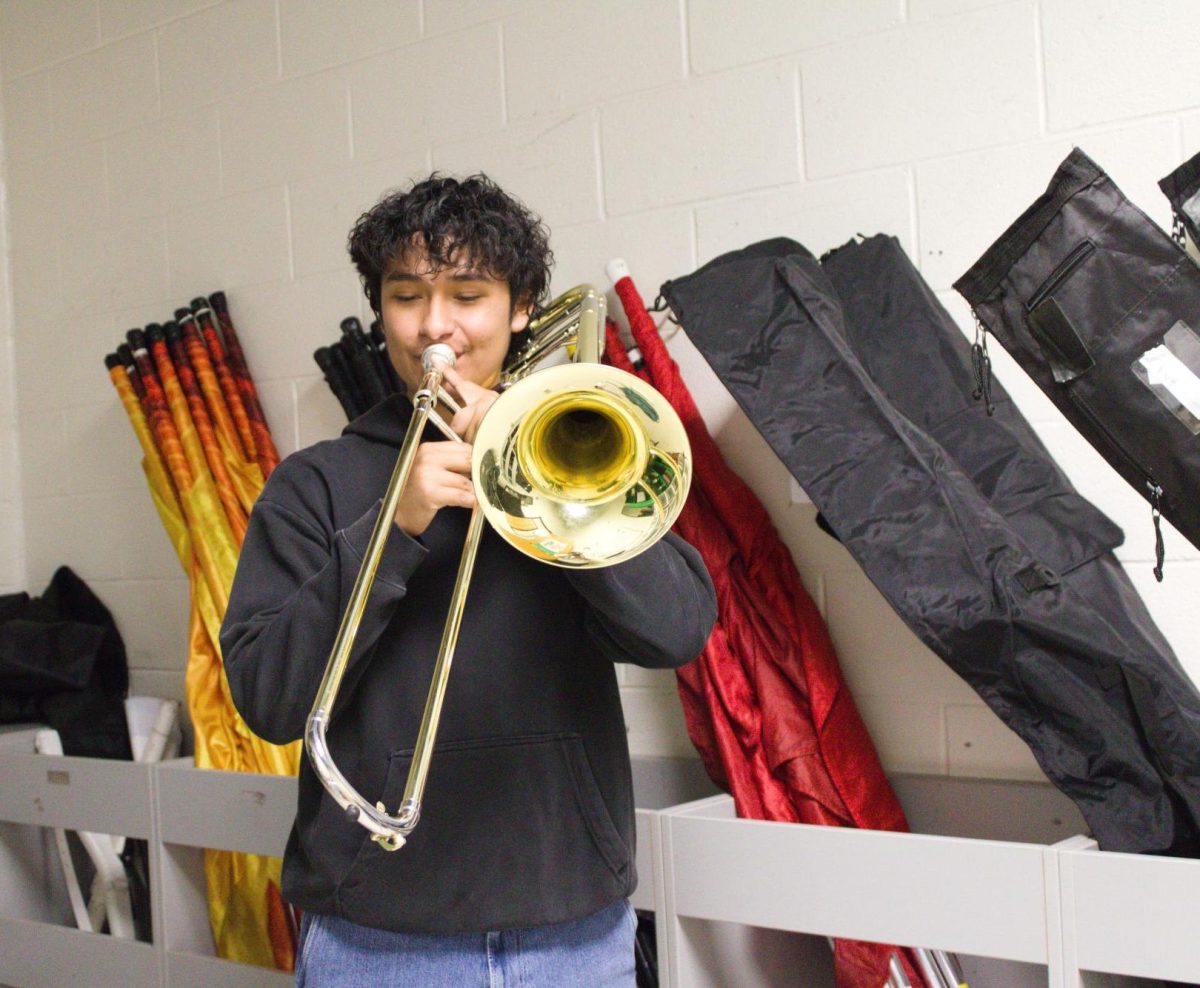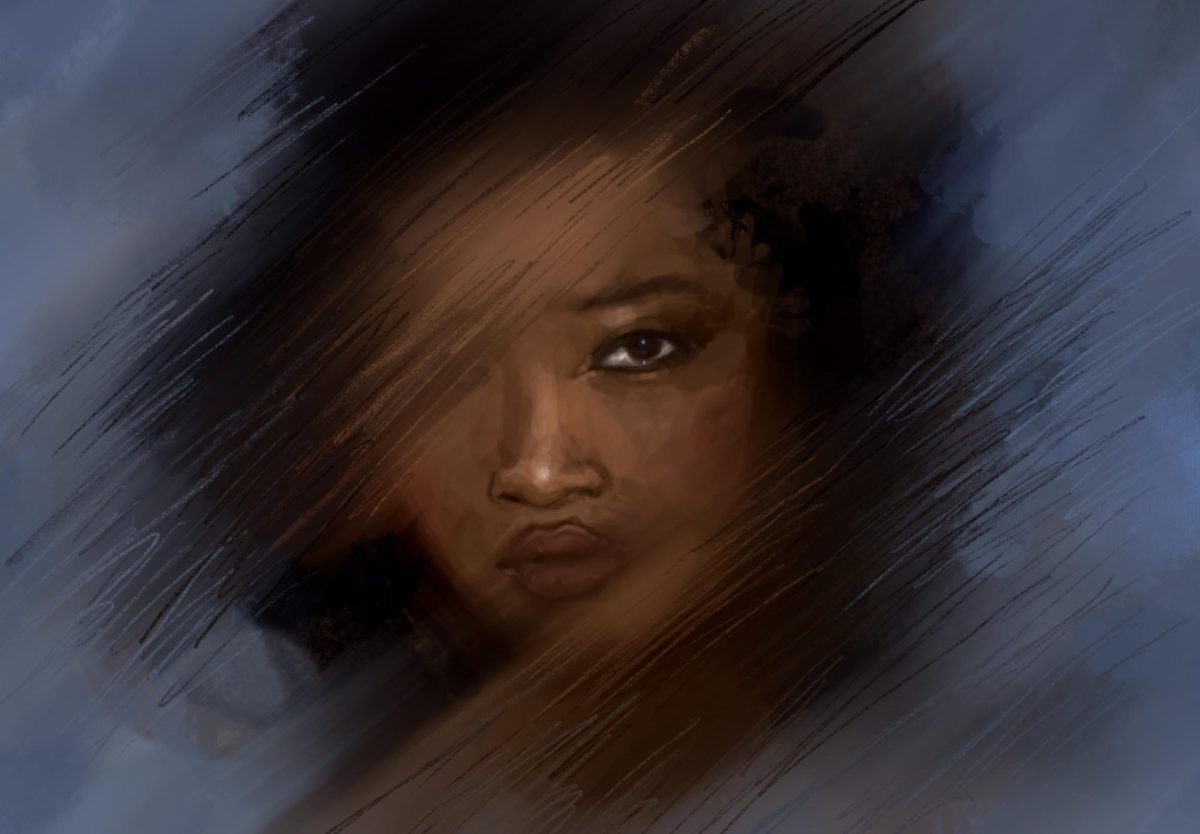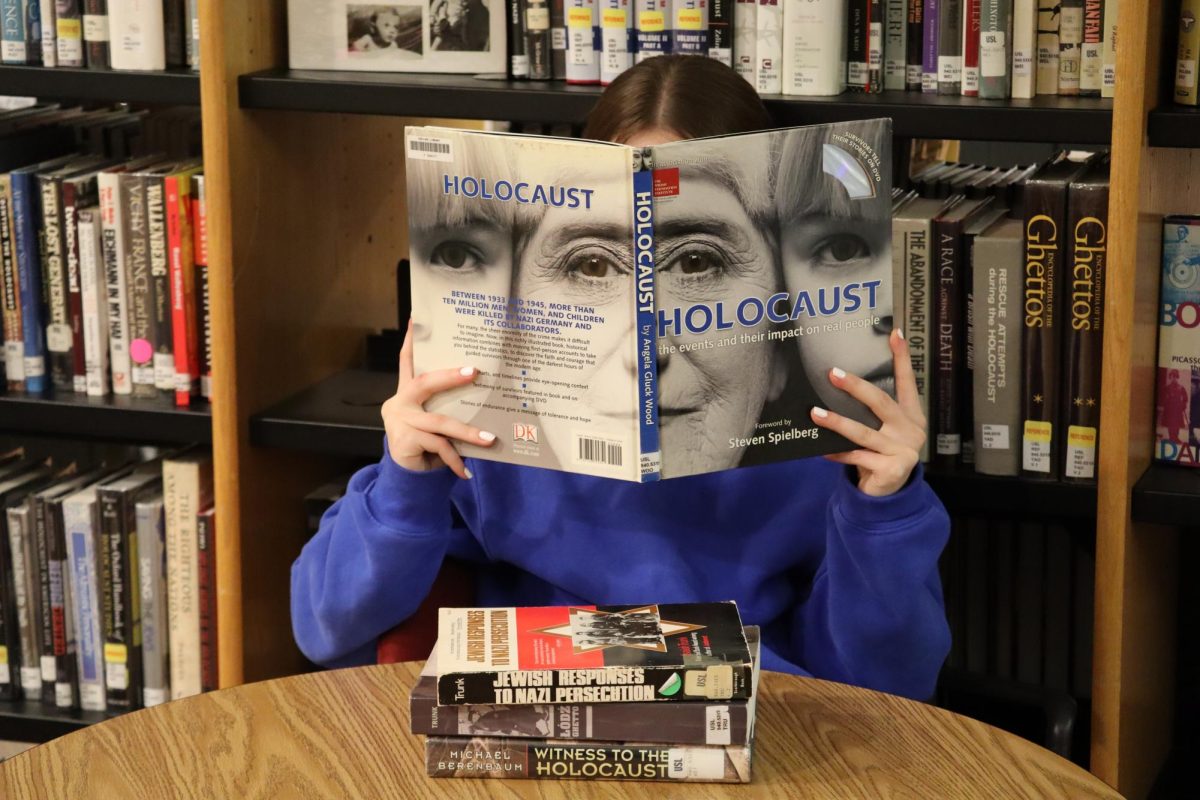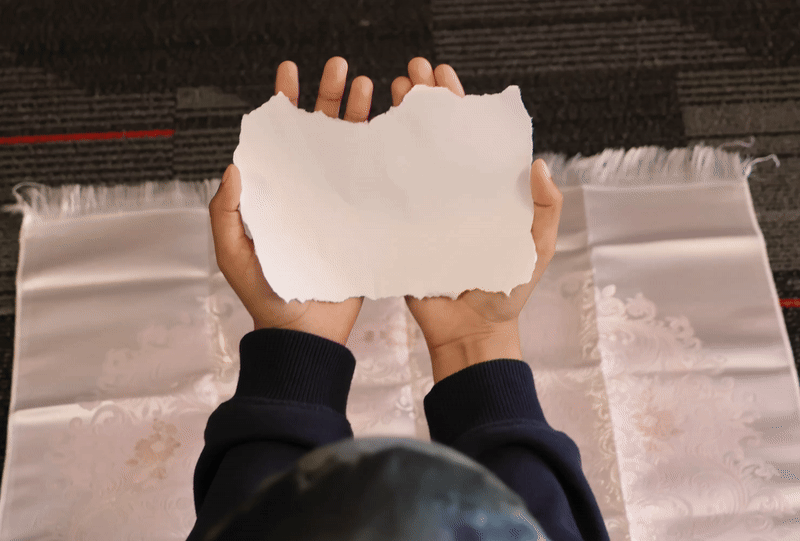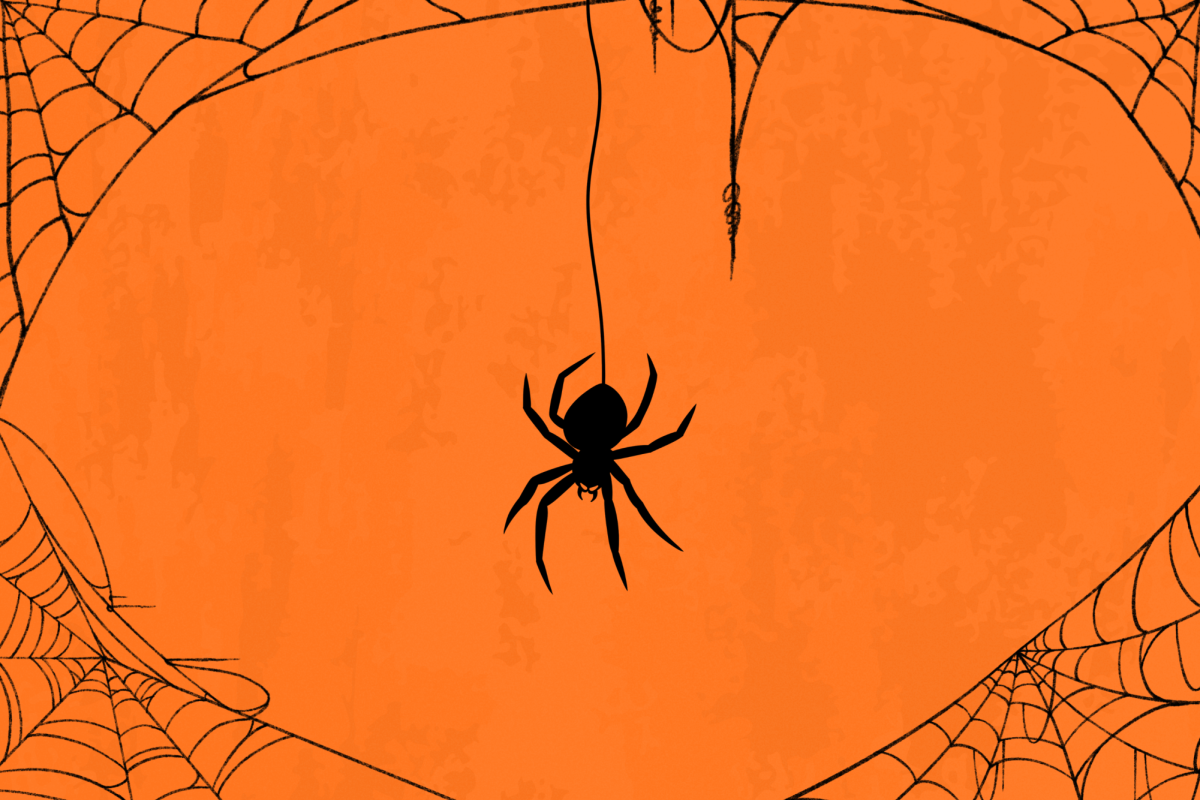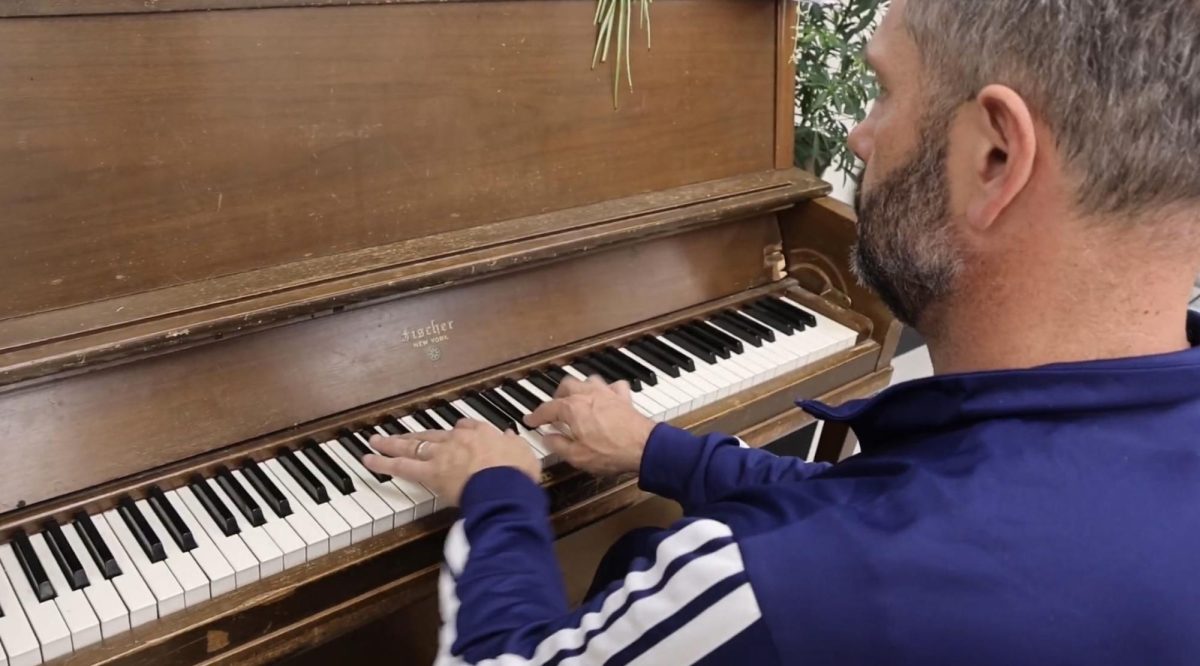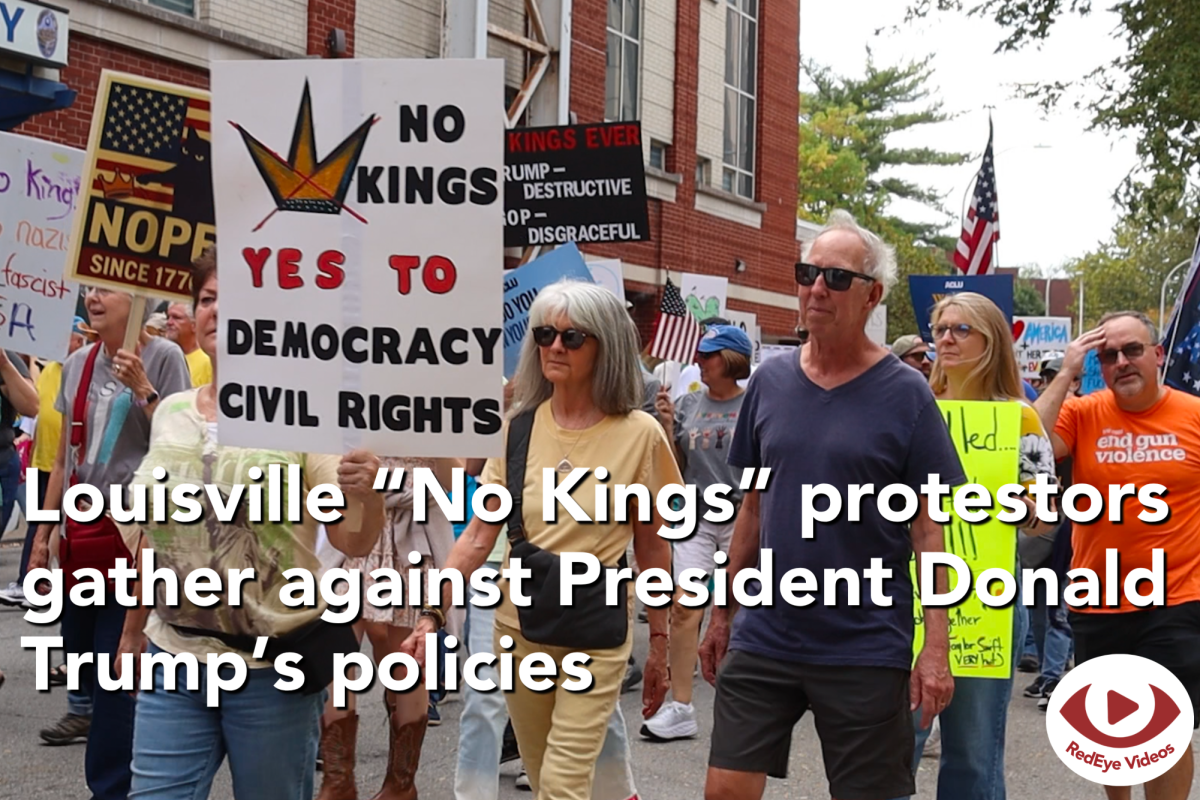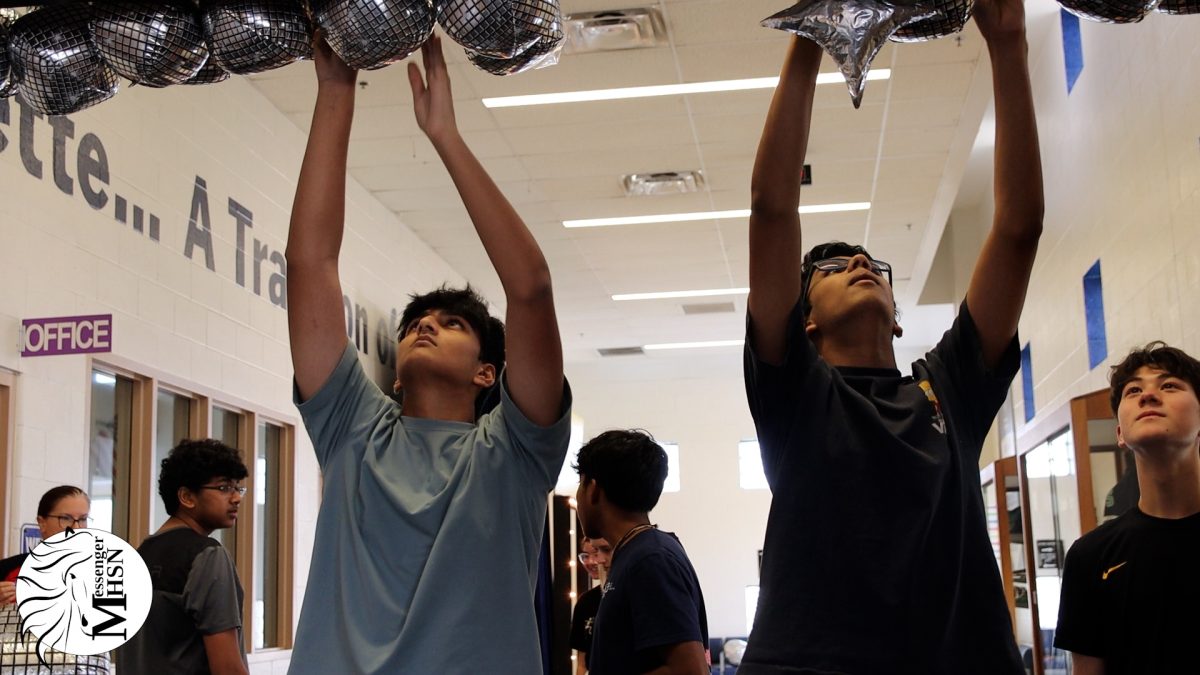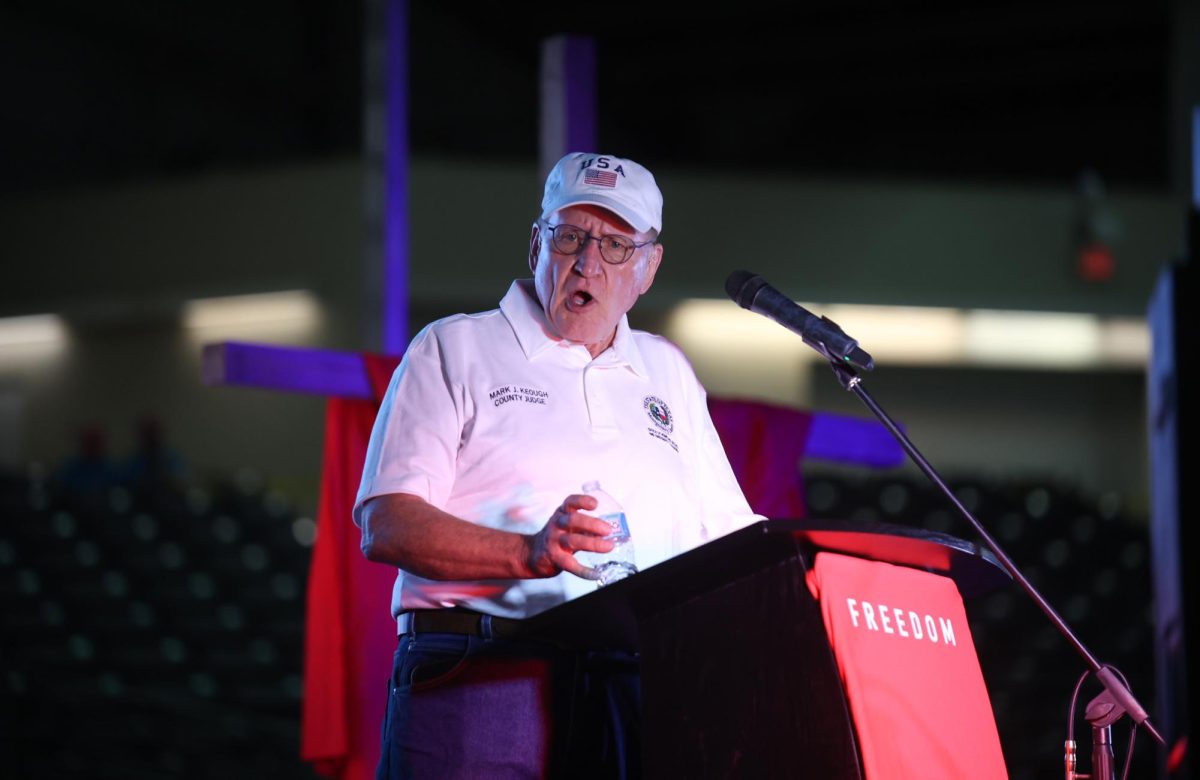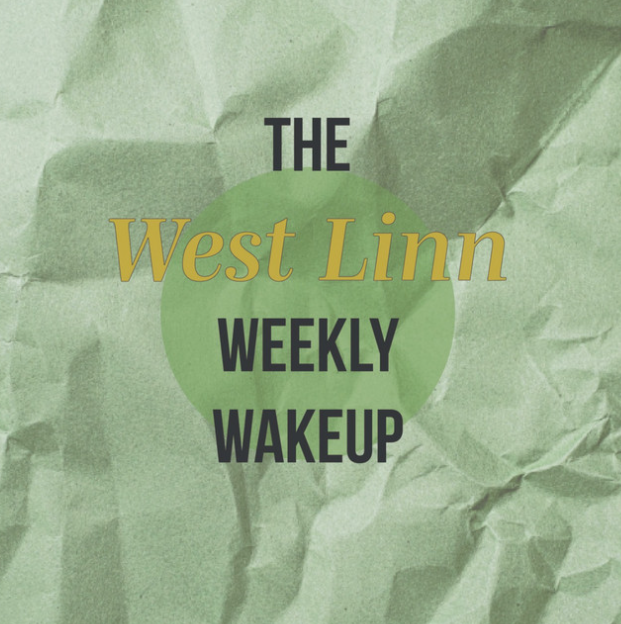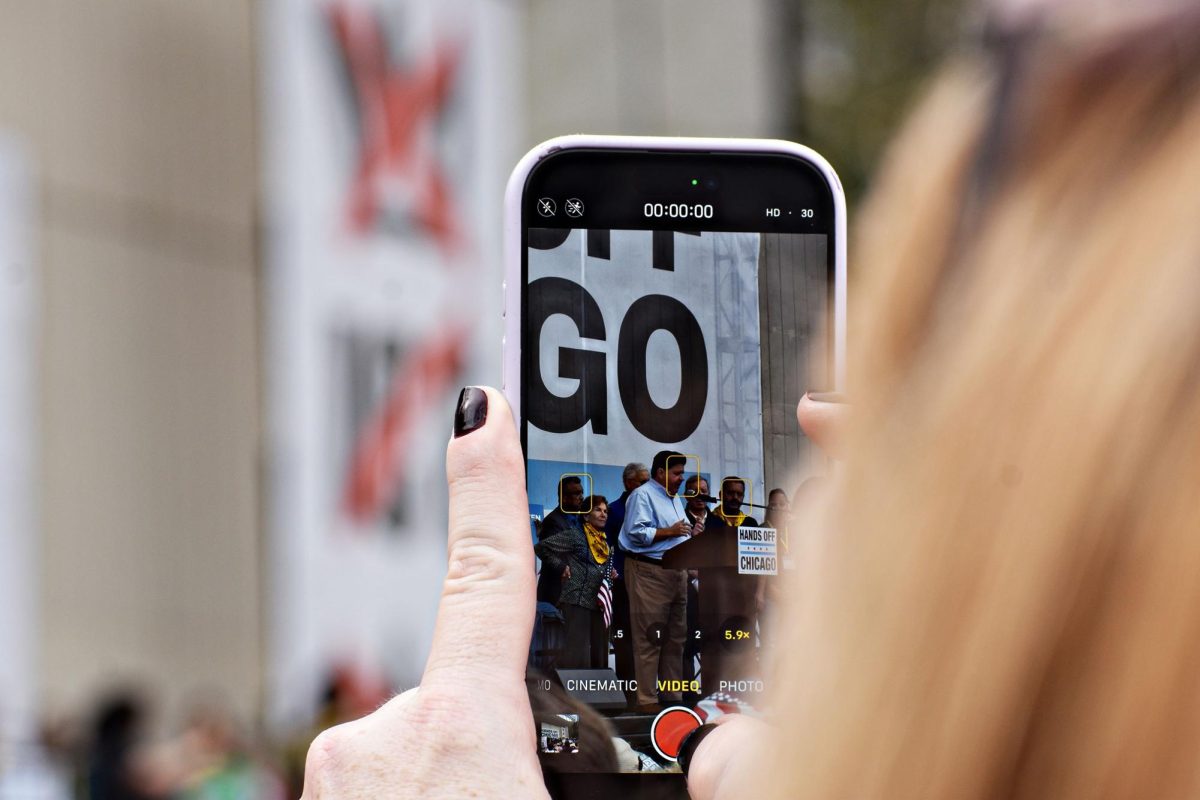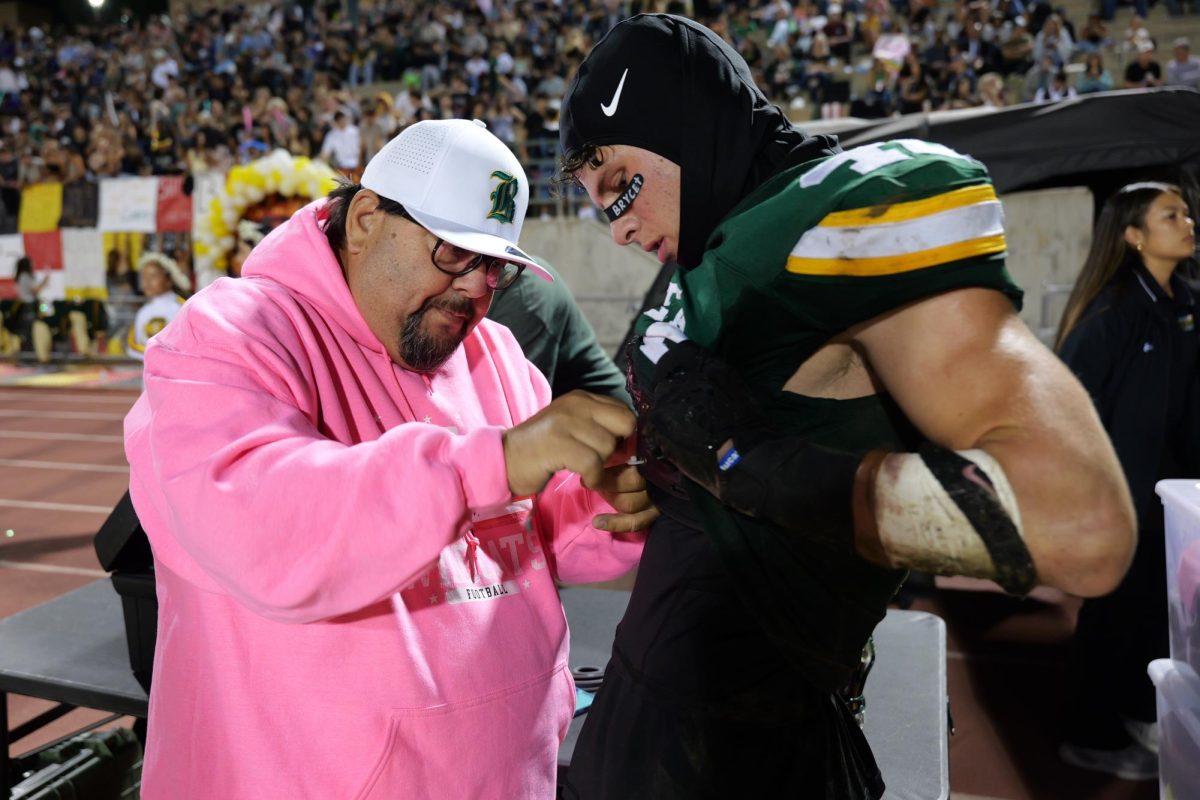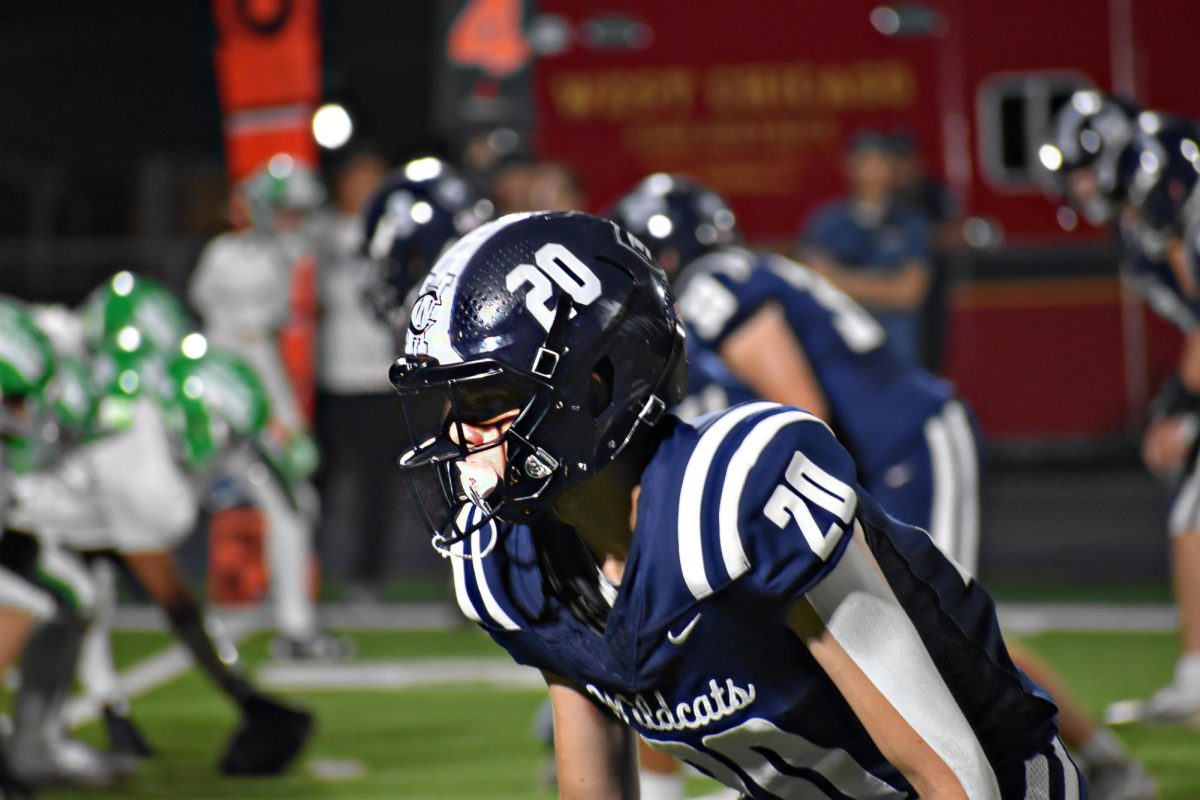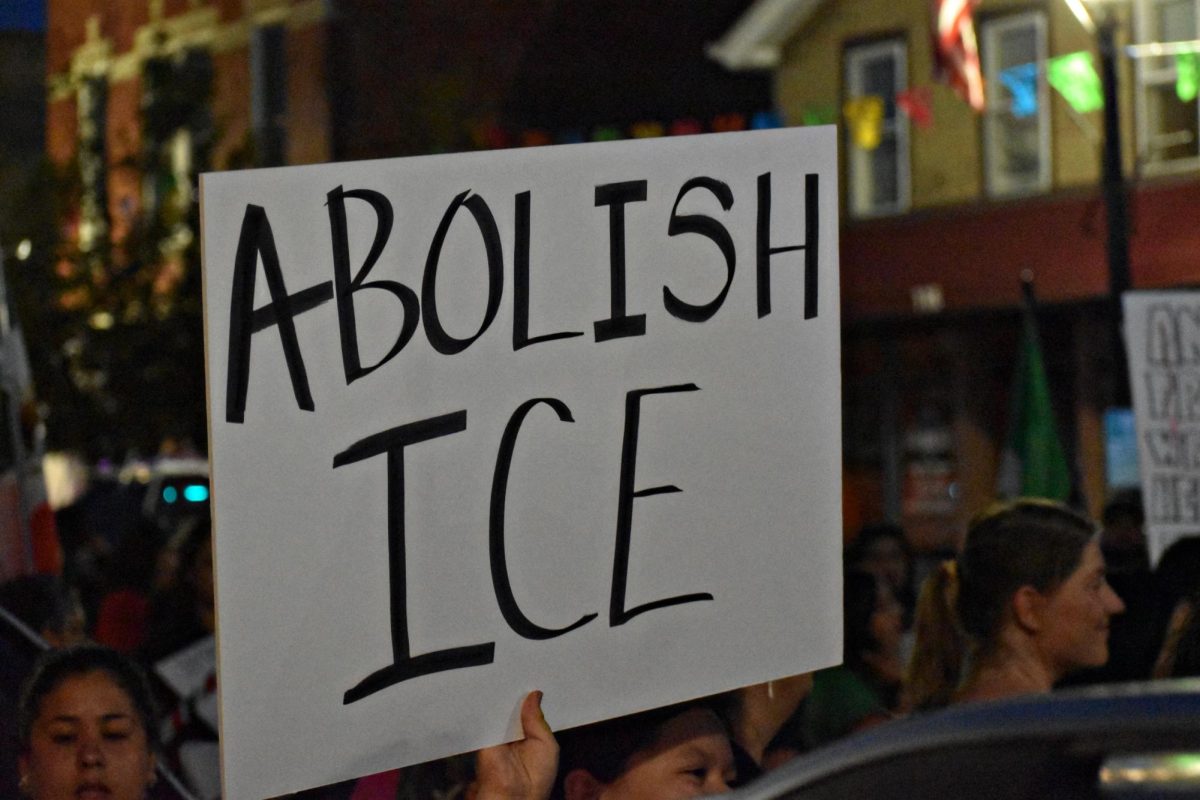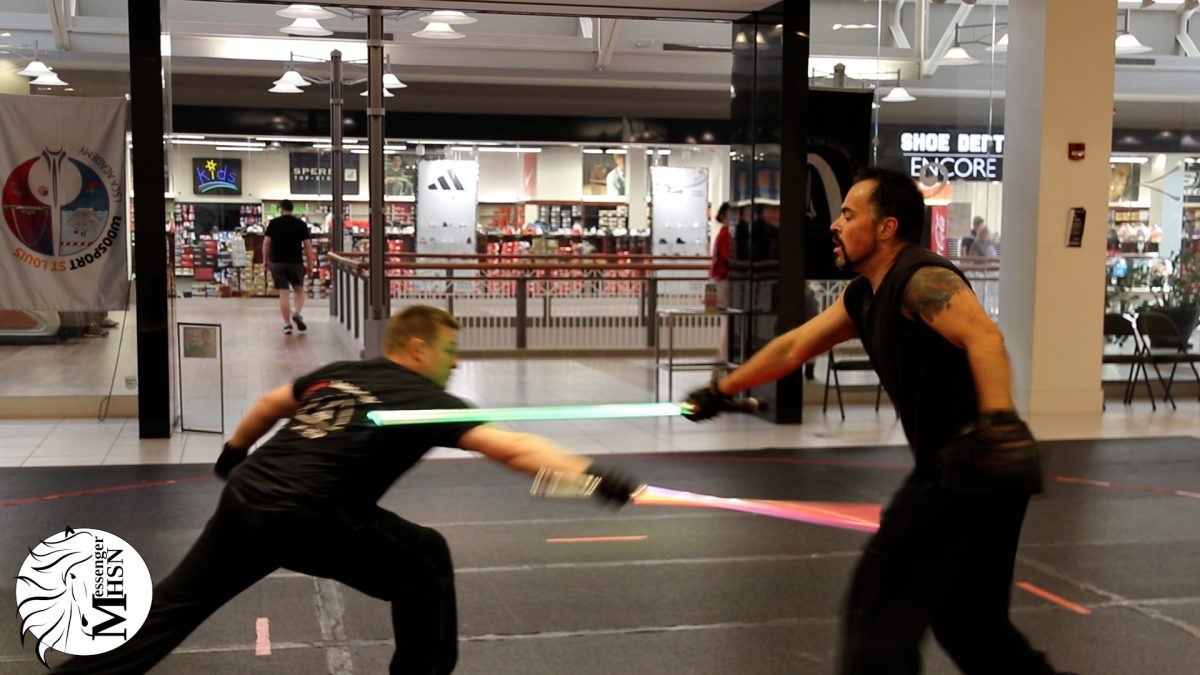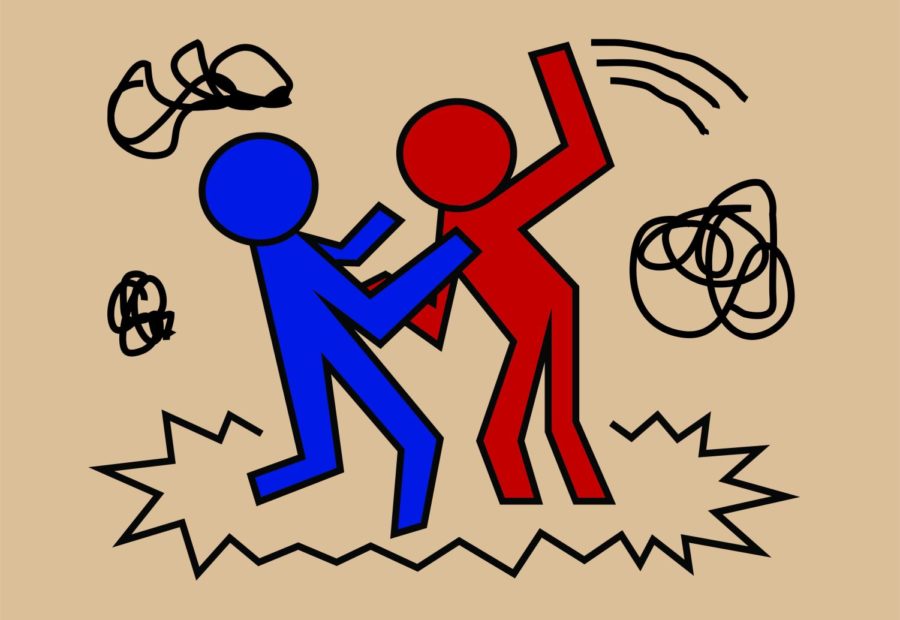Aftershock
As fights break out in schools due to the wide variety of struggles teenagers face today, administrators and teachers are finding ways to prevent violence.
Eva Jordan
WSS delves into the pandemic’s impact on violence and fighting in the ICCSD, specifically at West.
October 12, 2022
Fight or flight — it’s often one or the other. The choice can be difficult, and your answer may differ when you have to make a split-second decision versus when you have time to process the situation. Standing up for what you believe in may culminate in throwing a punch, but it could also result in you walking away. It all depends on your fight-or-flight response.
According to a May 2022 federal survey administered by the Institute of Education Sciences, approximately 1 in 3 public school leaders reported an increase in fights between students during the 2021-22 school year compared to the school year before the start of the COVID-19 pandemic. Now, West High and the ICCSD work to investigate the causes, as well as prevention methods, for these conflicts.
Build up
In a school environment, conflict is inevitable. With human interaction comes disagreements, which may result in fighting. There are 1,535 students at West High this year. With such a large population in one building, there is no guarantee that all students will get along. However, the reasons behind fights occurring among peers are distinct for each person involved.
Christine Dougan, one of two full-time Student Family Advocates at West, emphasizes how there can be vastly different explanations for the same fight.
“We all end up in these sorts of situations for a variety of reasons, and no two experiences are the same,” Dougan said. “Multiple realities can be true about the same situation. If there’s two people engaging in an argument, whether that be physical or verbal, they both have their own authentic truths.”
Every individual’s decision to fight stems from their own life experiences, but Gen Z shares experiences, such as living through a pandemic as a teenager, that impact their response to challenges.
English teacher John Cooper witnessed many of the effects of COVID-19 on teenagers through the changes in overall student behavior following the shock of life during a pandemic.
“[Teachers] saw kids get up and walk out of the room crying a lot last year,” Cooper said. “We saw people who would choose friend groups that they would just attach themselves to because they needed emotional support. Then, we saw kids who would just lock up — they wouldn’t do homework; they wouldn’t do anything.”
This trend was not surprising to Laura Gray, the ICCSD Executive Director of Diversity and Cultural Responsiveness.
“I do know that people [have] a considerable amount of anxiety since COVID-19, and it shows up differently for different people,” Gray said. “People who are internalizing the nervousness and anxiety, or the depression that we’ve seen statistically amongst a lot of our youth, have been having suicidal ideation. And, students who externalize it show up with these big, explosive personalities and are ready to fight.”
A March 2022 scientific brief by the World Health Organization supports Gray’s observations. According to the report, the worldwide prevalence of depression and anxiety increased by 25% in the first year of the pandemic. The brief also states that the pandemic had a greater influence on young people’s mental health compared to adults, causing them to be more at risk of suicidal and self-harming behaviors. Dougan describes how she sees the pandemic affecting young people in particular.
“Feeling isolated, which many of us were for months and months, can make us feel a lot of things, especially for young people who maybe have never processed that sort of collective trauma,” Dougan said. “Not having the toolkit and coping skills to move beyond that can lead us to act out in a variety of ways, one of which could be verbal or physical aggression.”
According to a July 2020 article published in The Journal of Pediatrics, not only has the social isolation caused by COVID-19 had direct effects on teenagers’ mental health, but the pandemic has worsened other adverse childhood experiences, such as food insecurity and school closures. These experiences have also contributed to greater mental health concerns.
Along with the heightened level of struggles youth are facing due to the pandemic, Cooper believes teenage emotions and hormone levels have always played a big role in why high school students choose to fight.
“Kids are chock-full of hormones, and sometimes it’s really difficult to think with your front brain,” Cooper said. “It’s not about the individual themselves. It’s about their abilities — it’s about their ability to think rationally in a tense or tough situation. That is a learned behavior. They’re kids, and they’ve got all these emotions, all these feelings, all this adrenaline pumping.”
The emotions that teenagers feel aren’t limited to school boundaries. Payton Busch, a seventh grade science teacher at Northwest Junior High, has seen many instances of fighting in school take place as a result of a simple misconception before the school day even begins.
“More times than not, it’s maybe just a misunderstanding on something that just boils over,” Busch said. “We’ve got to kind of peacock in front of our peers and show like ‘I’m bigger and stronger’ and try to impress everybody.”
Vumilia Maleunda ’24 describes a factor she believes causes fights to erupt on school grounds.
“I think fights start at school because folks just get into drama,” Maleunda said. “There are people out here who like drama and some other ones who don’t, and if you’re into it, you just get into it with anybody.”
Social media is a common denominator in many of these conflicts. West High Assistant Principal Elizabeth Bruening shares how she has seen social media influence the occurrence of violence.
“It’s easier to say things in a message than it is to someone’s face, and so people are not going to be as cautious about what they say [on social media],” Bruening said. “Because they’re not being careful with their words, even if they didn’t necessarily mean something in a bad way, it comes across that way. Then somebody on the receiving end of that is mad, and when they do see each other, there’s conflict.”
West High Principal Mitch Gross views social media as problematic, especially in a school setting.
“I would say the majority of fights start from a social media conflict,” Gross said. “If I had my way, I wish there was no social media at school at all, because it probably consumes at least a quarter of my day and all administrators’ days. If someone says something on Snapchat, and then it’s gone, and then they bring it to us, we have no way to prove it … Then, people are going back and forth about it and that blows up in the hallway.”
After a fight breaks out, social media continues to be used. Franny Jordan ’26 describes how quickly the nitty-gritty of a fight can spread from a couple of people to entire high school populations.
“People would take videos of fights, and they’d be all over [social media],” Jordan said. “I know this firsthand because I’ve seen them on my [Snapchat] story. My friends would send them in group chats … I’d see the same fight like 16 times.”
Not only does social media aid in sharing videos of nearby fights, but it also makes it possible for conflict across the country to be shared with a wider audience with a simple tap of a finger.
Many events in the years since COVID-19 first struck the U.S. have reportedly been triggered by racism, such as George Floyd’s killing and the Buffalo Supermarket shooting. With social media, anyone in the world can see these encounters taking place and can be heavily affected by them. Due to observing this violence, some may experience racial trauma, the mental harm caused by racial discrimination. As a person of color, Gray describes how the underlying reason for members of the BIPOC community fighting could likely be racial trauma.
“Especially since George Floyd’s death, I feel like it’s just been this huge platform of feelings of disrespect, feelings of wanting change, feelings of crying out, and so it’s really a culture in pain,” Gray said. “Underneath [the anger], there’s pain and longing for respect, longing for connection, longing for difference. Then, their patience is being tested in real life, and that’s where I think a lot of the clashes are happening.”
Altercation
West High and the ICCSD are no strangers to fights taking place on school grounds.
An incident reportedly broke out March 24 at Northwest Junior High. After the final bell rang, an older teenager who did not attend Northwest met a 14-year-old Northwest student outside of the school to fight. Amidst the normal after-school commotion of vehicles driving in and students filing out, administrators had a difficult time breaking up the fight themselves, causing then-principal Elizabeth Bruening to call the police.
“Most people do not want to go to jail,” said Shane Kron, the Coralville Chief of Police. “So when the police lights first start flashing or they first hear the siren, that’s usually when most fights are over. But in this particular case, it was not. They continued to fight; they continued to be aggressive. Even when we had officers on scene, they called for more officers. We ended up with everybody we had available over there.”
Current Northwest student Momo Shinozaki ’27 describes how she felt while watching that particular fight.
“It just felt uncomfortable, especially when the police [were] called,” Shinozaki said. “It had gotten to the point where even teachers were being punched. People from other schools got involved too. [I] felt like it escalated very quickly and it was out of control.”
The Iowa City Press Citizen’s coverage of the event brought more attention to exactly what went on at Northwest that day. Although police, teachers and administrators describe this occurrence as an anomaly, Jordan comments on the other numerous, but smaller fights that took place at Northwest throughout the 2021-22 school year.
“I wasn’t very proud of my school last year,” Jordan said. “I would tell people about the fights, and they’d be like, ‘Why do you sound so nonchalant?’ I’m like, ‘Because it happens [a lot].’ I’m used to it now. I don’t always act super surprised when it happens, because it doesn’t faze me very much anymore.”
Northwest has experienced many changes in administration the past few years, including a new principal and assistant principal this year. Altering a school’s administration can result in difficult and confusing adjustments for students and teachers.
“Every set of admin has their ideas of what they want the school to look like and how they want the school to run,” Busch said. “Then the ones that are in charge of putting that in place are the teachers. It’s hard for teachers to be consistent with those things.”
During the 2021-22 school year, Jordan felt as if there were a multitude of new rules frequently implemented at Northwest. Jordan believes these changes created tension between students and teachers at the school.
“Say a student never did anything wrong. [If they] walk out of the classroom, slam the door and yell at the teacher, they would get in trouble,” Jordan said. “For kids who do that every day, [the teacher] wouldn’t even blink. The kids who get in trouble more often, they would have less punishments. There was kind of nothing to lose. [The teachers] were tired of us. We were tired of them.”
Due to new methods of rule implementation, Northwest feels more secure to Shinozaki this year.
“[We have a] new principal this year, and she’s more strict with these rules. It feels safer … I think it’s better that it’s organized,” Shinozaki said.
According to Shinozaki, the new principal offers prize incentives to motivate students.
“For each student who doesn’t get a major referral, their name will be added into a drawing, and at the end of the year, [the principal] will draw five names,” Shinozaki said. “Those five students will get $100 from the principal and can pick three friends that will also get $25.”
Many factors play into the materialization of a fight, and sometimes an incentive is not enough to prevent one from breaking out. When a fight actually unfolds, a different component comes into play: bystanders. While there might be only two people engaged in a fight, many watch from a distance and choose not to intervene.
“Oftentimes, bystanders are perceived as accepting [the fight]. People are just standing by watching this; they’re not jumping in to stop it,” said Dr. Alison Bianchi, an associate professor in the Department of Sociology and Criminology and director for the Center for the Study of Group Processes at the University of Iowa.
The West High Mentors in Violence Prevention, or MVP, program advisor and counselor Paul Breitbach believes that intervening in situations is an important skill to learn not only for school, but for life.
“Usually ‘bystander’ has a negative connotation … The big goal [of MVP] would be to empower young people to realize that they have the power to intervene,” Breitbach said.
Cooper shares the same view as Breitbach.
“When bystanders do not intervene and do not attempt to support others, they’re encouraging a violent community,” Cooper said. “It is 100 percent on other kids to put phones away, to help de-escalate, step in [and say], ‘Hey, you don’t want to do this. First of all, you don’t want to get suspended. But more importantly, you don’t want to get hit. You don’t want to get hurt.’”
De-escalation
With each new school year, ICCSD schools adapt their approach to fit students’ needs. After a year of increased violence, they put new plans into place to discourage violence. One of these plans is the new filming policy — any student caught recording a fight will be suspended. At West, Gross believes this rule will help prevent students from instigating fights as well as aid in de-escalating the situation.
“Whether we’re in school or just in life, if we come across a conflict, hopefully the first impulse isn’t to record it, [it is] to aid and help and de-escalate it,” Gross said. “That’s what we want our students to be doing, not just capturing a video.”
Additionally, this year, the ICCSD has changed how its schools address out-of-school suspensions. Tate High School is an alternative high school in the ICCSD. The school has a smaller setting with goals to maximize every student’s potential. If a student in high school receives a suspension of five or more days, they go to Tate for four days, and return to their home high school for the fifth. Gross believes this will help students stay on track when they need time away from the normal school environment.
“I think there are certain situations where a student needs to be removed from an environment but just sending a kid home, I don’t know if that does anything. In fact, I would argue it probably makes things worse, because then that kid gets further behind,” Gross said. “They could be isolated with no social connection at all. I can’t be sure that they’re eating, that they get meals. It’s supposed to actually help you so when you come back into our school, you’re not really behind.”
Out-of-school suspensions at Tate provide students with time to talk and reflect on their situation. Once students are ready to come back to school, administrators meet with the student’s family to create a plan.
“It’s more of a therapeutic approach to a discipline issue, rather than saying, ‘Alright, you’re home for five days, see you five days later,’” Gross said. “Whenever you get suspended, we schedule a reentry meeting, and say, ‘Here’s what happened’ and [go over] the expectations, so it’s a real concrete plan of reintroducing the student back into the school.”
The smaller student population at Tate allows teachers and administrators to know about conflicts before they escalate. Although this can be more difficult for schools the size of West to address, Tate Dean of Students Kristina Brown doesn’t think it’s impossible.
“I think that it’s harder to implement some of the things we do at Tate High School at the larger schools, but I don’t think it should be the barrier to implementing anything,” Brown said.
In order to address fights at the root of the problem, the ICCSD continues to implement Social-Emotional Learning, or SEL, presentations during advisory time. The lessons are created to teach students about healthy ways to deal with their emotions.
“When you’re not feeling good, when you’re about to blow up, there are some strategies that you could do to self-regulate. There’s a place you can go to take a timeout, you don’t have to just let it explode,” Gray said. “I think that is what’s happening; things are exploding. Either people feel like they can’t go to a trusted person to say, ‘Hey, I’m feeling this’ or they just don’t have the skills to say, ‘Okay, these are some things that I could do differently.’”
Through SEL, the ICCSD is working on presenting these skills to students to help them better understand their choices when it comes to their feelings. Art teacher Christian Aanestad recognizes that while students may not find these lessons useful, they are a step in the right direction.
“I think it is a little [bit of a] manufactured concept, that it comes out in this way that [makes it] hard to convey sincerity,” Aanestad said. “But I think if it’s not said, you have no chance of making an impact and making a connection.”
As of this year, West High also provides students with spaces to process thoughts, such as NESTT and SPACE. The NESTT, or Navigating Emotions and Stress Through Training, is an area where students can take a moment to de-stress.
Another resource students may use during times where they feel overwhelmed is Student Prevention, Access, Connection and Engagement, or SPACE. For a student to have access to SPACE, they must receive a teacher referral. Kristin Brack, the SPACE Coordinator, expresses that SPACE is a great place to go when students feel like fighting and need to overcome that urge.
“SPACE is a place that [students] can come to and have restorative conversation before [a conflict] escalates into something that’s physical,” Brack said. “We’ve had students just come in for advice [saying], ‘I’m going through this problem at home or with my family. What are some steps that I can do to make things better?’”
Maleunda feels that SPACE is a place where adults will listen to what teenagers have to say.
“Go there if you need advice and if you need somebody to talk to because they always listen. They’ll listen to your story. If you’re having a bad day, go in there [and] they will help you out,” Maleunda said.
Busch tries to make connections with each student that walks into his room. He believes it’s important to show them that science isn’t all they have to talk about and hopes this practice helps students know they can come to him whenever they have a problem.
“I try to compliment something about maybe what they’re doing or if they competed [athletically] the night before. I just try to have more personal conversations and relationships. I try to share stories from my life to kind of show them that even though I’m your teacher, I’m still human,” Busch said. “I’ve still dealt with a lot of issues that maybe you are dealing with. I have some advice or maybe some insight that might be useful.”
Busch believes giving students respect helps them open up about their own lives more.
“I think a lot of [conversation] comes with giving students respect whenever they have deserved and earned it, but then also holding them accountable whenever they start to slip,” Busch said. “If you are able to tread those waters lightly and also keep a positive spin on things, students tend to respect that a little bit more and tend to come to you with more things to talk about — good, bad or in between.”
This story was originally published on West Side Story on October 7, 2022.


